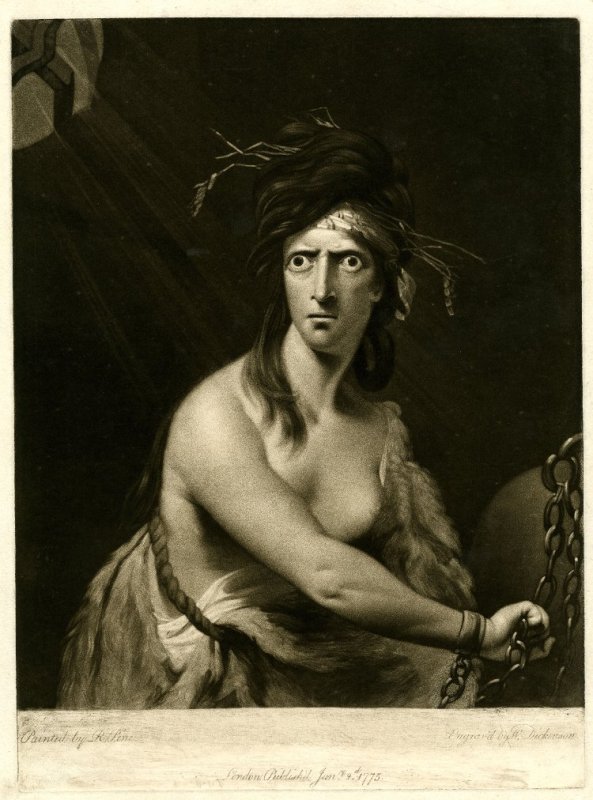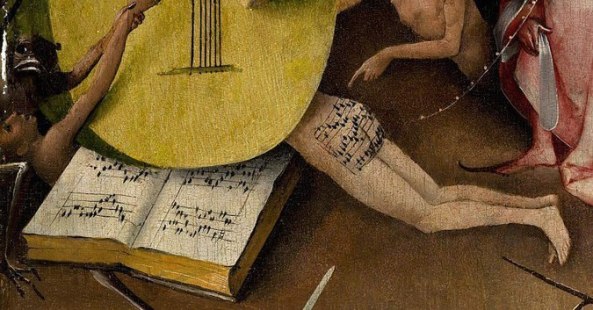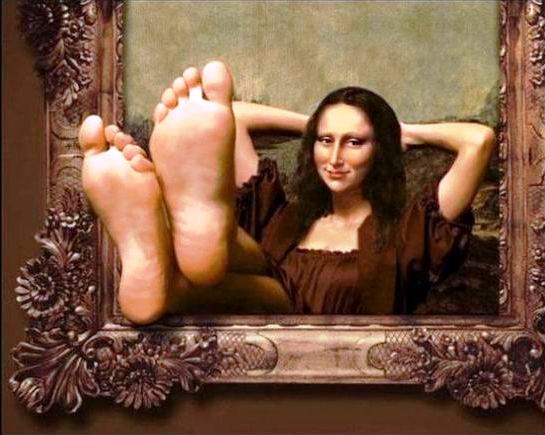
There are many humorous — and serious too! — advice as to how to fake art appreciation and get ahead in a company of snobs who might snub you if you are a dunce.
Such as Adopt THE stance. Stand back a distance from the piece of art, purse your lips as if in deep thought, and say, “I find this piece entirely derivative/jejune/neo-Slavic.”
Howcast.com is pretty blunt in its helpfulness:
Tired of feeling stupid when the conversation turns to art? Here are some easy ways to impress art snobs without the tedium of actually learning anything.
That’s what it says, without the tedium of actually learning anything. Because it might damage your brain if you’d try to subject it to such tedium, you know.
So, if in fear of learning, don’t read further, because there is a remote possibility you might learn something… You know how the knowledge can sneak upon you when you are not careful.
Michelangelo Merisi (Amerigo) Da Caravaggio (1571 – 1610 ) was an Italian artist, active in Rome, Naples, Malta and Sicily between 1593 and 1610.
Caravaggio’s paintings, especially portraits, often depict young men in various stages of undress, either adorned, surrounded or both with luscious organic fruit and vegetation, making cow eyes at you. Most of them look like adult maidens of the age of consent.
This slideshow requires JavaScript.
There is, however, quite famous image of a woman by Caravaggio’s talented brush. She looks more masculine than feminine, her full name is
Medusa Gorgon (no middle name), and she resembles — am I imagining it? —
Johnny Depp. Take a look:
 A
And here is Johnny:
El Greco, born Doménikos Theotokópoulos, (1541 – 1614) was a painter, sculptor and architect of the Spanish Renaissance. His paintings often have sharp contrasts and lots of skinny bearded faces. Most of them bearded faces are either vividly blue or somewhat bluish, hinting on high odds of them turning purple… or green:
This slideshow requires JavaScript.
Lots of boisterous little people in the picture, all making broad, emphatic gestures, mostly in village setting – this must be
Pieter Bruegel the Elder (ca. 1525/30–1569). As a connoisseur of the
Flemmish art and Bruegel in particular, you might say,
“Notice, that far from simple recreations of everyday life, Bruegel’s paintings have powerful compositions that are brilliantly organized and controlled, reflecting a sophisticated artistic design.”
This slideshow requires JavaScript.
Lots of boisterous little people in the picture, often naked, all making broad, emphatic gestures, mostly defensive ones, and lots of ugly, repugnant creepy-crawlies – this must be
Hieronymus Bosch. (1450 – 1516). As a connoisseur of
Early Netherlandish masters, you might say,
“God knows, I don’t believe in Hell, not really. But I’m sure Master Bosch made a few trips there and back.” Modify the sentence to closely adhere to your own spiritual leanings.
This slideshow requires JavaScript.
And, finally, if nearly every painting has at least one face that is marked by uncanny resemblance to a newly single Russian President Vladimir Putin, then it is Jan van Eyck (or Johannes de Eyck) (before c. 1390 – before c. 1441), a Flemish painter active in Bruges and is generally considered one of the most significant Northern European painters of the 15th century.
Take a look. Here they are, Jan van Eyck’s people.
This slideshow requires JavaScript.
And here is
Vladimir Vladimirovich Putin.

For each man or woman Jan Van Eyck put in, there is at least one Putin. Not very masterful a phrase, but simply couldn’t resist
While we are at it, I could’ve given you a few suggestions on how to distinguish mature Jackson Pollock from the canvas produced by a 5 year old with access to cans of spray paint in primary colors, but I won’t. There are others that can do it much better. Anyone, actually, who had a brief but unforgettable period of heavy drug use but beat the habit and turned out to be a great dad who gives his kiddies an unlimited access to cans of spray paints. Pollock can be found in my post Contemplation of Art Appreciation. You might find a painting to compare to Pollock’s affixed to your fridge with a magnet – a gift from a child or a grandchild. Heck, if not then DIY! You can do it.
I know I shouldn’t have. Ah, well…
 On 19 November 1819 Ferdinand VII of Spain inaugurated the Museo Real de Pinturas. Two centuries later the present-day Museo Nacional del Prado is commemorating its Bicentenary.
On 19 November 1819 Ferdinand VII of Spain inaugurated the Museo Real de Pinturas. Two centuries later the present-day Museo Nacional del Prado is commemorating its Bicentenary.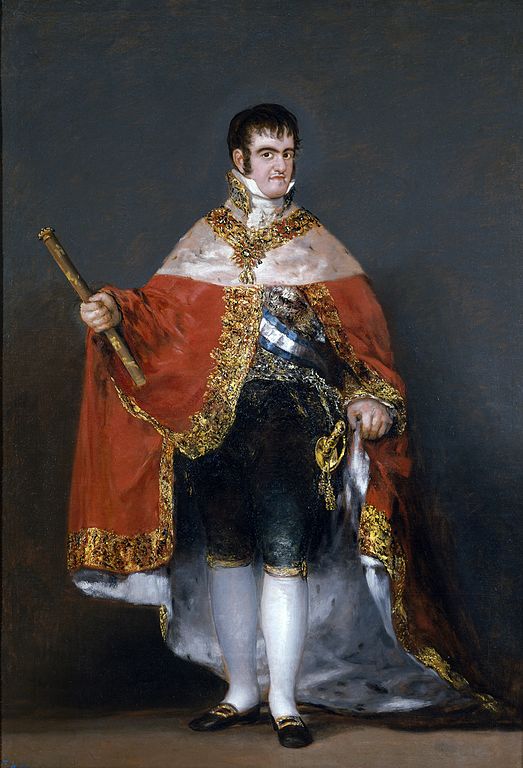

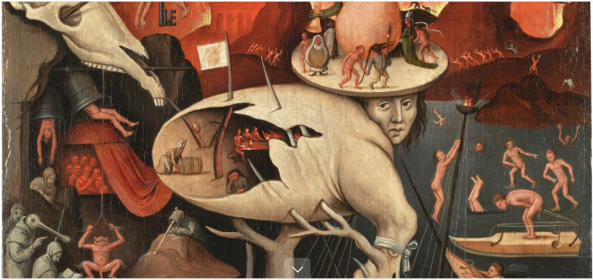
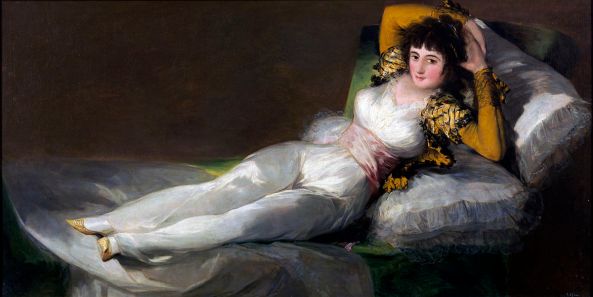

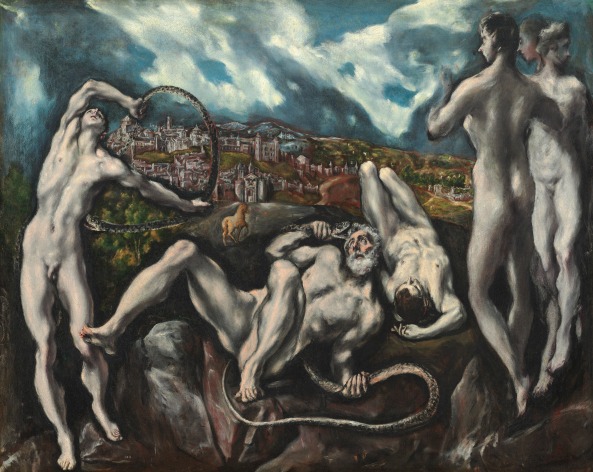

 In 2016, 500 years after Hieronymus Bosch died, the Art Center will organize a range of special exhibitions and activities.
In 2016, 500 years after Hieronymus Bosch died, the Art Center will organize a range of special exhibitions and activities.


 The city center, although 500 years passed since the master’s death, still remains timelessly unchanged. Bosch, should he’d miraculously reappeared on one of the side streets, would’ve been able to find the way to his father’s house on the market square and its own workshop nearby, without much difficulty. Just as 500 years ago, on market days, the square is overflowing with flowers, cheeses and fish, the water is gurgling in the medieval fountain, and the bells of the cathedral toll by the hour.
The city center, although 500 years passed since the master’s death, still remains timelessly unchanged. Bosch, should he’d miraculously reappeared on one of the side streets, would’ve been able to find the way to his father’s house on the market square and its own workshop nearby, without much difficulty. Just as 500 years ago, on market days, the square is overflowing with flowers, cheeses and fish, the water is gurgling in the medieval fountain, and the bells of the cathedral toll by the hour. During the life of Bosch the cathedral was nearly completed. 16 exterior arches — double flying buttresses — are decorated with 96 stone sculptures, wonderfully alive, truly “boschian.”
During the life of Bosch the cathedral was nearly completed. 16 exterior arches — double flying buttresses — are decorated with 96 stone sculptures, wonderfully alive, truly “boschian.”  Artisans, musicians, fantastic beasts and birds… Bosch must have seen them, remembered from childhood, flying buttresses of the cathedral with their riders — like the bridge from ‘s-Hertogenbosch to the creativity of her famous native.
Artisans, musicians, fantastic beasts and birds… Bosch must have seen them, remembered from childhood, flying buttresses of the cathedral with their riders — like the bridge from ‘s-Hertogenbosch to the creativity of her famous native.

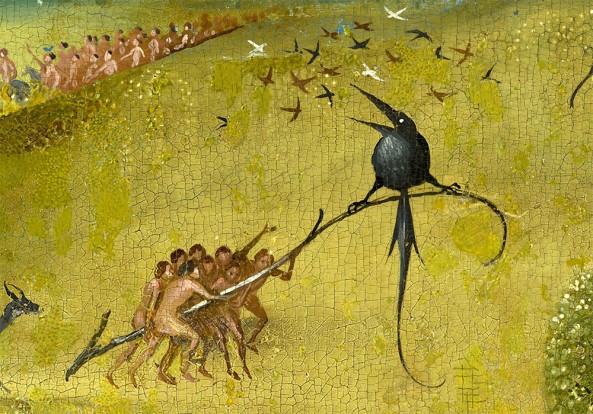
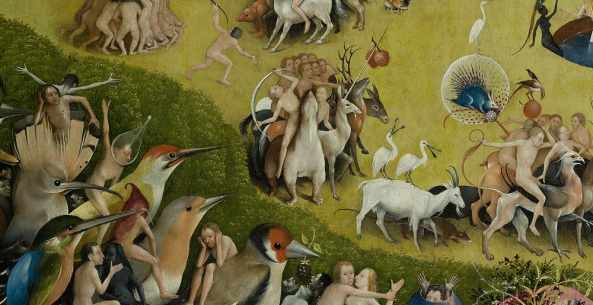 All thanks to the interactive documentary Jheronimus Bosch, The Garden of Earthly Delights —an in-depth tour though The Garden.
All thanks to the interactive documentary Jheronimus Bosch, The Garden of Earthly Delights —an in-depth tour though The Garden.  It’s a web interface, a transmedia tryptich, where the visitor is taken on an audio-visual journey, including sound, music, video and images to enrich the storytelling.
It’s a web interface, a transmedia tryptich, where the visitor is taken on an audio-visual journey, including sound, music, video and images to enrich the storytelling.
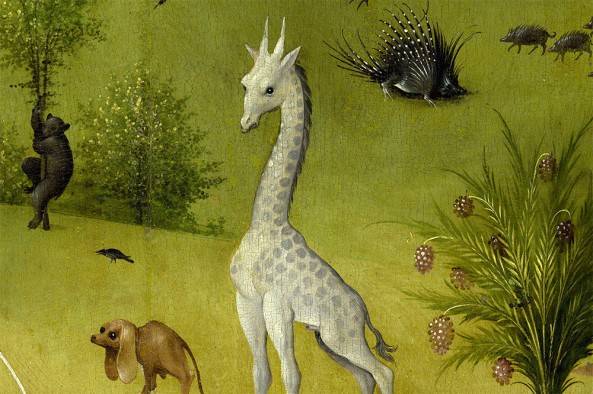 If you haven’t been there already, take a tour. It’s a truly unique experience.Whether you like Bosch or not, it’ll be worth your while.
If you haven’t been there already, take a tour. It’s a truly unique experience.Whether you like Bosch or not, it’ll be worth your while.







